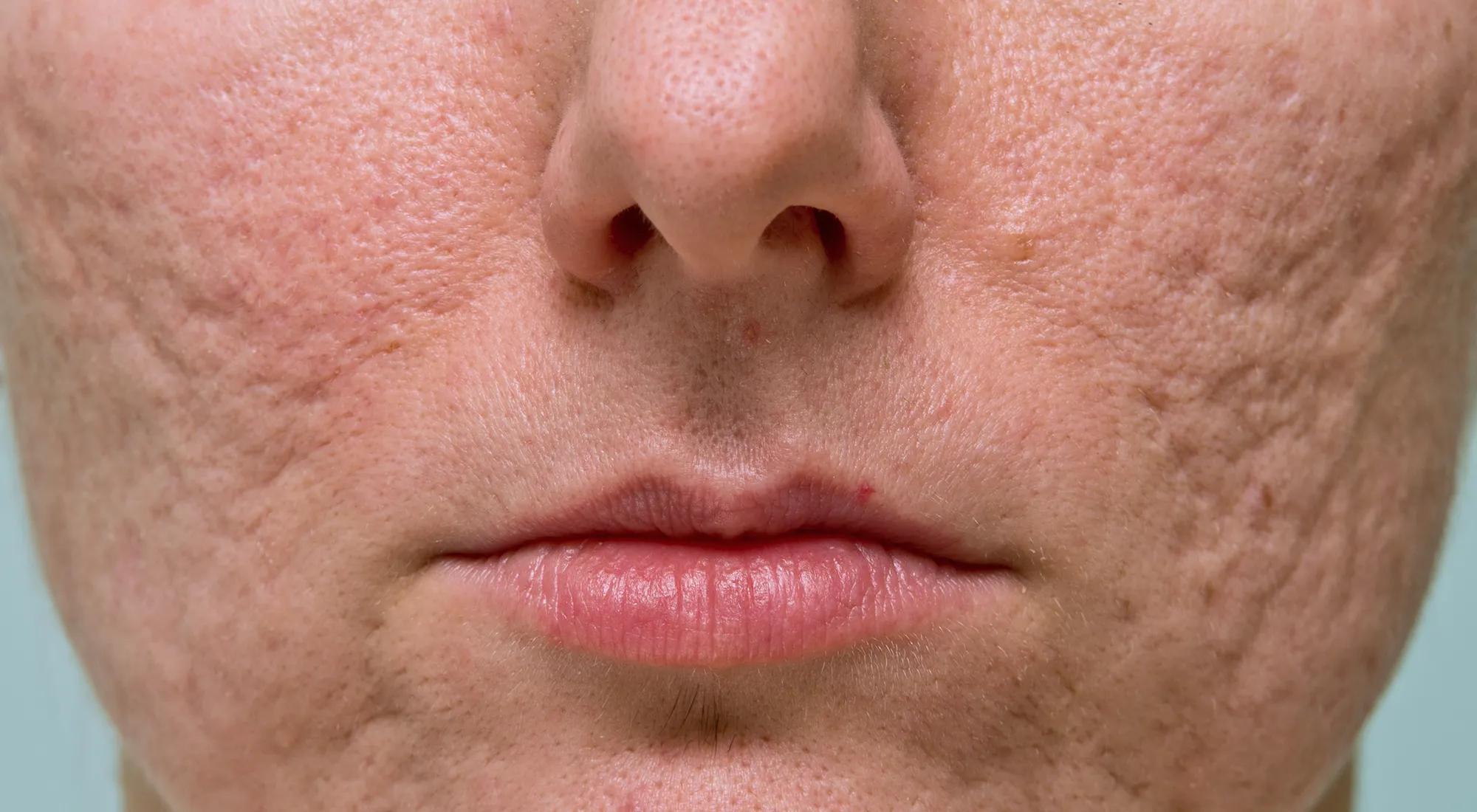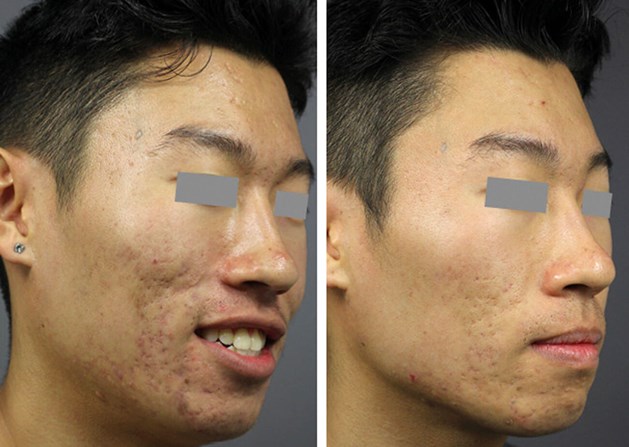Cutting-edge Acne and Acne Scars Treatment: Solutions for Every Skin Kind
Recognizing the Numerous Skin Disease and Reliable Therapy Options for Acne Scars
Acne scars represent a complex interplay of skin conditions that substantially effect individuals' self-confidence and general skin health and wellness. Comprehending the unique types of acne scars-- atrophic and hypertrophic-- together with their underlying causes, is critical for identifying efficient treatment techniques. Various therapeutic choices exist, ranging from advanced skin-related treatments to all-natural treatments. Nevertheless, the effectiveness of these treatments commonly depends upon individualized evaluations by qualified specialists. As we discover the landscape of acne scar management, it comes to be apparent that the journey towards clearer skin might include more than just topical remedies.
Kinds of Acne Scars
The 2 key categories of acne scars are hypertrophic and atrophic marks. These scars are further categorized right into 3 subtypes: ice pick scars, which are deep and slim; boxcar marks, which are larger and have well-defined sides; and rolling marks, which create a wave-like appearance due to unequal skin structure.
In comparison, hypertrophic marks result from an overproduction of collagen during the healing procedure, leading to raised areas on the skin. These scars are commonly strong and can differ in color, sometimes appearing red or darker than the surrounding skin.

Causes of Acne Scarring
Scarring occurs as an outcome of the body's all-natural healing reaction to inflammation and injury brought on by acne lesions. When acne kinds, it activates an inflammatory reaction, resulting in the release of numerous cytokines and growth factors that advertise recovery. This procedure can sometimes lead to too much tissue development or insufficient fixing, resulting in scars.
The key root causes of acne scarring consist of the intensity of the acne itself, period of the lesions, and specific skin types. Extreme inflammatory acne, such as nodules and cysts, is much more most likely to result in scarring because of deeper tissue damages. Additionally, incorrect handling of acne lesions, such as squeezing or choosing, can aggravate tissue injury and swelling, increasing the probability of scarring.
Hereditary predisposition additionally plays a significant duty; people with a family members background of scarring go to a greater risk. Skin type and color can affect mark development, as darker skin tones may experience post-inflammatory hyperpigmentation, while lighter skin may establish atrophic marks.

Therapy Alternatives for Scarring
Reliable therapy options for acne scarring differ relying on the type and severity of the marks. Usually categorized into atrophic, hypertrophic, and keloid marks, these conditions require customized techniques for optimal results.
For atrophic marks, which are defined by a loss of tissue, therapies such as chemical peels, microdermabrasion, and laser therapy are commonly used. These methods advertise skin renewal and stimulate collagen manufacturing, therefore enhancing skin texture. Subcision, a minimally intrusive procedure, can also work by breaking up coarse bands underneath the skin.
Keloid and hypertrophic scars can be a lot more challenging to treat. Alternatives consist of corticosteroid injections to reduce swelling and squash the scars. skin rejuvenation treatments. Sometimes, cryotherapy or laser therapy may be advised to lessen their appearance
Surgical options are readily available for serious scarring, where excision or skin grafting may be needed. It's vital for individuals to seek advice from with a skin specialist to assess their details mark type and talk about one of the most appropriate treatment plan. Combining several therapies usually produces the most effective results, ensuring that each individual's unique skin problem is dealt with properly.
Natural Remedy and All-natural Solutions
Natural options and home remedies can supply an available technique for individuals seeking to boost the appearance of acne marks. Numerous components located in the home kitchen have shown possible benefits in improving skin appearance and promoting healing.
Using fresh aloe vera gel straight onto the marks can aid boost skin hydration and reduce redness. Honey possesses natural antibacterial and moisturizing qualities that can aid in scar healing.
Another effective option is lemon juice, which serves as a natural exfoliant and can lighten hyperpigmentation. It should be used cautiously, as it may create photosensitivity. Oat meal masks are additionally valuable; their mild peeling can assist remove dead skin cells while relaxing irritation.
Necessary oils, such as tea tree oil and lavender oil, can better support mark healing as a result of their antimicrobial buildings. It is vital see here to do a Web Site spot test prior to applying any type of remedy to guarantee there are no negative responses. These all-natural solutions can be a complementary method in the journey to reduce acne scars.
Avoiding Future Scarring
Embracing a positive method to skincare can substantially reduce the danger of creating future acne scars. Among the vital approaches is to take care of acne successfully as it develops (acne treatment for sensitive skin). This includes utilizing non-comedogenic skin care items and medicines suggested by dermatologists that target acne without irritating the skin. Regular cleaning, peeling, and hydration can assist keep skin health and avoid clogged pores.
Furthermore, staying clear of the temptation to choose or press acne sores is crucial, as this can cause swelling and subsequent scarring. Instead, individuals need to focus on applying topical treatments that advertise recovery and reduce inflammation. Components such as salicylic acid, benzoyl peroxide, and retinoids are understood for their efficiency in managing acne and reducing scars.

Lastly, preserving a healthy and balanced diet regimen abundant in anti-oxidants and staying hydrated supports skin regrowth. By applying these preventive steps, individuals can substantially decrease their threat of future scarring and promote overall skin health.
Final Thought
In final thought, a thorough understanding of acne marks, incorporating both atrophic and hypertrophic types, is important for efficient treatment methods. Customized interventions, read this including specialist therapies and home remedies, can significantly improve skin appearance and texture. Preventive measures also play an essential role in minimizing future scarring. Consultation with a dermatologist remains important to develop personalized approaches that consider specific skin kinds and scar seriousness, ultimately boosting the efficiency of mark administration techniques.
Acne scars stand for a complicated interaction of skin conditions that significantly influence people' self-confidence and total skin health. The two key groups of acne marks are hypertrophic and atrophic marks. These marks are further classified right into three subtypes: ice pick marks, which are deep and narrow; boxcar marks, which are larger and have distinct edges; and rolling scars, which develop a wave-like appearance due to irregular skin texture.
A detailed assessment with a skin doctor can help figure out the most appropriate intervention, taking right into account the person's skin type, scar extent, and overall skin health and wellness.
Appointment with a dermatologist stays essential to create tailored approaches that think about specific skin kinds and scar seriousness, eventually boosting the efficacy of scar management methods.